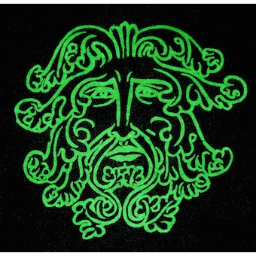Came across this in an essay by Arne Naess called "The World of Concrete Contents". It is a pretty abstruse philosophical essay but this passage stood out:
"Confrontations between developers and conservationists reveal differences in estimating what is real. What a conservationist sees and experiences as reality the developer does not see - and vice versa. A conservationist sees and experiences a forest as a unity, a [glossary]gestalt[/glossary], and when speaking of the heart of the forest, he or she is not referring to the geometrical centre. A developer sees square kilometres of trees and argues that a road through the forest covers very few square kilometres, so why make such a fuss? And if the conservationists insist, the developer will assert that does not touch the centre of the forest. The heart is saved, he or she thinks. The difference between the antagonists is one of [glossary]ontology[/glossary] rather than one of ethics.
The gestalts 'the heart of the forest', 'the life of the river', and 'the quietness of the lake' are parts of reality for the conservationist. To the conservationist, the developer seems to suffer from a kind of deeply based blindness. But the developer's ethics on environmental questions are based largely on how he or she sees reality. There is no way of making a developer eager to save a forest as long as he or she retains the conception of it as a set of trees. The charge that the conservationist is motivated by subjective feelings is firmly based on the developer's view of reality. The strong positive feelings toward development he or she considers are based on objective reality, and as long as the society is dominated by developers, the developer need not be passionate. It is the struggling minorities who are passionate, rather than those who follow the mainstream."
In simple terms I guess the conservationist sees the wood, the developer sees the trees. Both are "right" in their own terms, but the conservationist view is much richer in that is a fuller self-realization than an ego-centric separation between an 'objective' reality (trees) and a subjective individual (the viewer).
In this essay Naess is arguing that concrete reality is not just objectively out there, but in fact consists fully of subject, object and medium. When a Lapp from Arctic Norway says in court, accused of an illegal demonstration against diversion of a river for a hydro-power scheme, that the river is "part of himself" he is spontaneously expressing what the philosophy of deep ecology calls the wider deeper self. When the US Government proposes to build a pipeline though the Sioux lands at Standing Rock they are literally threatening the reality of people whose identity is more than just ego.
It is within us all. To the extent that we are able to better realise our potentialities we all have an ecological self which is wider and deeper than the subjective ego. We experience this as a sense of place, a connection and love for things outside ourself. The city, or town, or valley, or mountain that is part of me. The path of self realization dissolves the ego in the world of life, and in doing so grows and strengthens the self.
Ethics and morality follow from the conception of reality. The developer's ethics and morals are a consequence of a narrow ego-centric view of reality. The deep ecologist experiences all levels of being (to use Schumacher's terminology) as, and in, the self. The landscape, and the tree, and the owl and the human are all one self; so the ethical and moral imperative to nurture the self comes naturally to seeing and caring for the whole wood and not just the trees.
To be 'subjective' in this sense is the only full consideration that is possible. The developer using 'objective' criteria is the one who is missing the point.


Comments powered by CComment